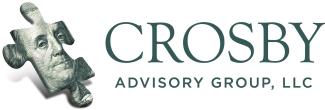
Secure Act 2.0: How It Impacts Your 529 Plan And Retirement
Check out our video recording on YouTube
The Setting Every Community Up for Retirement Enhancement (SECURE) Act 2.0 is a proposed legislation that aims to improve Americans' retirement savings by expanding access to retirement plans and enhancing existing laws. The SECURE Act 2.0 brings a host of changes that will significantly impact your retirement planning. In this post, we'll explore three key provisions of the SECURE Act 2.0 and what they could mean for your financial future.
Rollover of 529 Plan to Roth IRA
One of the most significant provisions of the SECURE Act 2.0 is that it will allow individuals to roll over up to $35,000 from a 529 plan to a Roth IRA, tax-free if the 529 plan has been open for at least 15 years. The funds in a 529 plan are typically used to pay for qualified education expenses. However, this new provision can allow individuals to use any leftover funds to invest in their retirement savings.
This change is beneficial for individuals who have already saved enough for their children's education or for those who want to diversify their retirement savings. By rolling over the funds into a Roth IRA, individuals can benefit from tax-free growth and withdrawals in retirement.
Emergency Distributions from 401(k)s
Another provision of the SECURE Act 2.0 is that it will allow for emergency distribution of up to $1,000 from a 401(k) plan without penalty. However, the amount must be paid back within three years, or it will be subject to taxes and penalties. While this may seem like a useful option in times of financial crisis, it's essential to consider the potential long-term impact on your retirement savings.
If you take out a $1,000 emergency distribution and don't pay it back, you will lose out on the potential growth and compounding of that money over time. Furthermore, if you're struggling to pay bills now, it may be challenging to come up with an additional $1,000 in the future.
Delaying Required Minimum Distributions (RMDs)
Finally, the SECURE Act 2.0 proposes to push back the required minimum distribution (RMD) age for traditional IRAs from 72 to 73 years old. This change acknowledges the fact that people are living longer and should be able to delay their RMDs if they choose to do so. Delaying RMDs can help retirees to keep more money invested for a longer period, potentially allowing it to grow and provide more income in the future.
In conclusion, the SECURE Act 2.0 contains several provisions that can significantly impact your retirement savings. While some changes, such as the rollover of 529 plans to Roth IRAs, may be beneficial, others like the emergency distribution from 401(k) plans may not be worth the potential long-term impact. Overall, it's important to stay informed about proposed changes to retirement laws and to work with a financial advisor to ensure that your retirement plan is aligned with your long-term goals.
Please note: This content is not a direct recommendation for investment. Investing involves risk including the potential loss of principal. Not all investments are suitable for all people. Crosby Advisory Group, LLC is a registered investment advisor in Ohio, Florida, and Texas.

